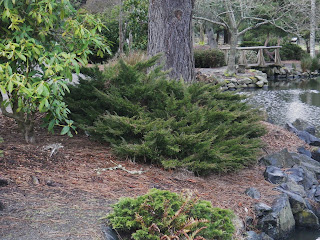Where have our desires led
us? Are we, in fact, gilding the lily?
~Amy Stewart We want a cut flower to be
perfect, unique, extraordinary, fragrant, long lasting and inexpensive don’t
we? But all those demands are the reason most store bought cut flowers have no
fragrance. In the breeding efforts to get sturdiness suitable for freight
handling and a long vase life, flowers fragrance and delicacy has been lost.
We want a cut flower to be
perfect, unique, extraordinary, fragrant, long lasting and inexpensive don’t
we? But all those demands are the reason most store bought cut flowers have no
fragrance. In the breeding efforts to get sturdiness suitable for freight
handling and a long vase life, flowers fragrance and delicacy has been lost.
Amy Stewart's book, Flower
Confidential is a fascinating look into the very real, at times ugly
industry that provides us with the beauty of cut flowers for our homes.
Travelling with the cut flower from greenhouse to retailer, it is an exposé of
the sordid realities of the industry. In
it she tells us how flowers are being created in laboratories, bred in test
tubes, grown in factories, machine harvested and packed, auctioned, sold and
transported by air across oceans and continents. Stewart also details histories
of growers, both domestic and international, their relationships to each other,
histories of hybridizing, plant profiles and genetic plant facts, the Dutch
Auction and much more.
Sadly for us, 80% of all cut
flowers purchased in the USA
are imported, grown by many countries using chemicals banned for use in the US California
Next to the hazardous
chemical issue is the fact that many countries are growing and shipping flowers
that are handled by workers not paid by fair wage practices nor are they
properly protected from the daily chemical use. Stewart brings light to the
fact that many of the policies are exploitive, using child labor and women
report rampant sexual harassment.
Stewart goes on to outline a
little known dilemma of whose flowers to buy. Ecuadorian roses are priced low
that keeps buyers going back to Ecuador Ecuador
On the other hand American
grown roses encourages migrant labor which separates the Mexican worker from
family who are left behind in Mexico
Much of the coffee,
chocolate, and hand goods industries have already implemented fair trade
certification programs as an industry standard. What about the cut flower
industry? Stewart's research shows that while the US
has been slow to jump on the bandwagon, much of Europe
has already implemented certifiable standards for social and environmental
responsibly grown flowers. In the US
- Least toxic chemicals chosen for use
- Less overall chemicals use
- Healthier work environment for workers
- Less crowded growing conditions for the plants whereby
improving the plants overall strength, which helps the plant to resist
diseases and pests on it’s own
- Better working conditions and wages for the workers
- In some cases higher price to the consumer
Sad? A little depressing?
Certainly not visions of Miss Marple lovingly tending and cutting roses from
her bushes to sell from a little cart in front of her cottage. Today’s cut flowers
are a commodity market in which they are forced into unnatural growing
conditions and packed and shipped for market quickly so you can pay as little
as possible.
Overall a very informative
book, difficult to put down. I must say I am a tad disillusioned after reading
it but definitely better informed and appreciative of knowing more of the
reality of what goes into the cut flowers I buy. I will think twice now about
chemical residues as I handle store bought cut flowers, knowing that they have
likely been chemically sprayed and dipped several times over their growing life
and on the production line. And if they are from Peru ,
they have been fumigated at the Miami Int'l
Airport Miami Int'l
Airport 's cargo division's marketing
specialist, "asparagus from Peru Miami if it comes from Peru
Armed with this new
information, the next time I went to Trader Joe’s I looked at their cut
flowers. Sure enough, the protective, plastic wrap is stamped not only with the
Trader Joe’s logo but also Veriflora
and Rainforest Alliance certifications.
Boy, I sure did feel better about buying and handling (without gloves) these
lovely lime green chrysanthemums.
There is so much more to her
book than what I've mentioned here.
Do you buy flowers from your
local grocer or florist? If so I hope you find this review informative and I
highly recommend reading Flower
Confidential. Please note, this book may be titled Gilding
the Lily for the European market.
In Bloom in My Garden Today: Agastache
foeniculum (anise hyssop), Alyssum, Begonia ‘bonfire’, Canna, Caryopteris
‘longwood blue’ (bluebeard), Cimicifuga simplex ‘brunette’, Coreopsis
‘moonbeam’, crocus, Cyclamen hederifolium), Shasta Daisy(white double) Daphne
caucasica ‘Eternal Fragrance’, Echinacea purpurea magnus, Eupatorium rugosum
‘chocolate’ (joe pye weed), Fuchsia, Gaillardia (blanket flower), Gladiolus
callianthus (formerly Acidanthera), Hosta, Kirengeshoma palmata, Kniphofia
‘echo mango’Lavender, Nepeta ‘six hills giant’ (catmint), Phygelius ‘new
sensation’ (cape fushia), Rhododendron, Rose, Salvia
Author’s photos






























